Managing warranty claims is one of the most daunting tasks in the warranty lifecycle. Managing large amounts of data brings the possibility of errors at different levels. Every Dealer/Importer have developed their own information technology systems for managing warranty, but there continues to be concern that these systems are not yet fully capable of delivering consistent data.
Furthermore, warranty claims management is a critical business operation in the Automotive and Heavy equipment industry. It comprises multiple steps such as warranty applicability, root cause analysis, fault codes, Symptoms code, resolution code and more, to validate the claims raised. It also involves the identification of faulty Parts that should be returned and replaced by the OEMs and applicability of supplier chargebacks.
How Annata 365 help business to efficiently manage Warranty claims ?
Annata 365 is an industry vertical solution for organizations who Import, distribute, sell and service Vehicles / Heavy equipment’s. Annata’s AI powered warranty management module enables Dealers, Suppliers and OEMs to Streamline warranty processes, reduce warranty costs, improve collaboration among all stakeholders, and enhance customer satisfaction.
What are the best practices followed in the solution?
1. Automatic warranty claim validation
Dealers (/Importer) spend lot of manual effort in verifying and clarifying the warranty claim data that are sent / received into the system. Most of the Dealers face warranty claim rejections from Importer(/Supplier) majorly due to- Incorrect combinations of failure codes, incorrect data such as start date/end date, discrepancies in the labor hours and parts, invalid choice of warranty type selection etc. These kinds of rejections not only impact approval time but also consumes resources to manually review the claim record every time before submission.
Annata 365 provides with an automatic warranty claim validation feature, Advanced validation rules are used to validate the various fields populated in the claim form. The validation rules can be pre-defined in the system by claim operators based on business requirements of your organization.
Below is the validate button in the warranty claim screen that can be used to quickly validate various business rules before submission:

The system provides greater flexibility in setting up a very complex validates rules that can be specific to a brand, class, model or warranty type.
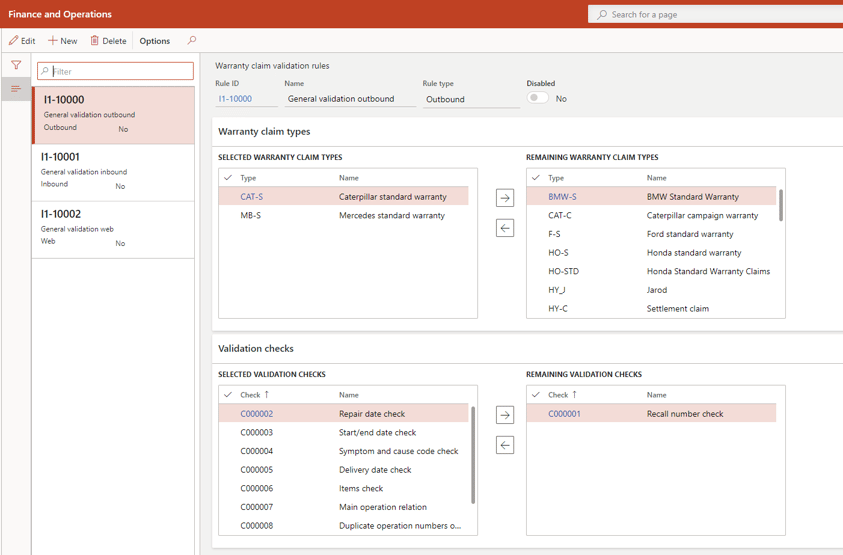
Below are some example validation rules currently pre-defined in above example:
Validate if the Recall number is specified on the warranty claim related to a recall (or service campaign).
Check if the repair end date is less than the start date.
Check if repair is performed during last 14 days.
Check if the Symptoms and cause code are in valid combination.
Check if the labor hours does not exceed a range against a warranty type etc.
2. Artificial intelligence and machine learning capabilities
Annata 365 offers a range of Artificial intelligence and Machine learning capabilities to effectively process data for more accurate analysis of parts causing failure & predictive failures analysis. AI powered reports can be proactively shared with suppliers/OEMs which could provide them with better insights on failure patterns and assist them to determine actions to elicit a remedy. This kind of data from various dealerships could also be a basis for OEMs to come up with service letters (/recalls) depending upon the severity of the failure.
The combined power of machine learning and advanced analytics can greatly improve the efficiency of warranty processing by shortening the claim approval time after the dealer has submitted it. For e.g., an AI-powered claims bot can review the claim, Verify the claim details and pass it through an algorithm and send instructions to the warranty manager for Full /Partial settlement or reject the claim.
Predictive analytics backed by AI provides system with unique potential to scour through piles of warranty claim data and proactively notify customers on potential future failure. Various other advantages such as automation of existing workflows & approval process could significantly reduce the time and resources spent on monitoring claims, at the same time it also increases the process efficiency thus enhancing the customer experience.
Apart from all above benefits, the solution provides an out of box well designed role-based dashboards to effectively collaborate between different user roles such as Service advisors, Warranty advisor and Warranty managers.
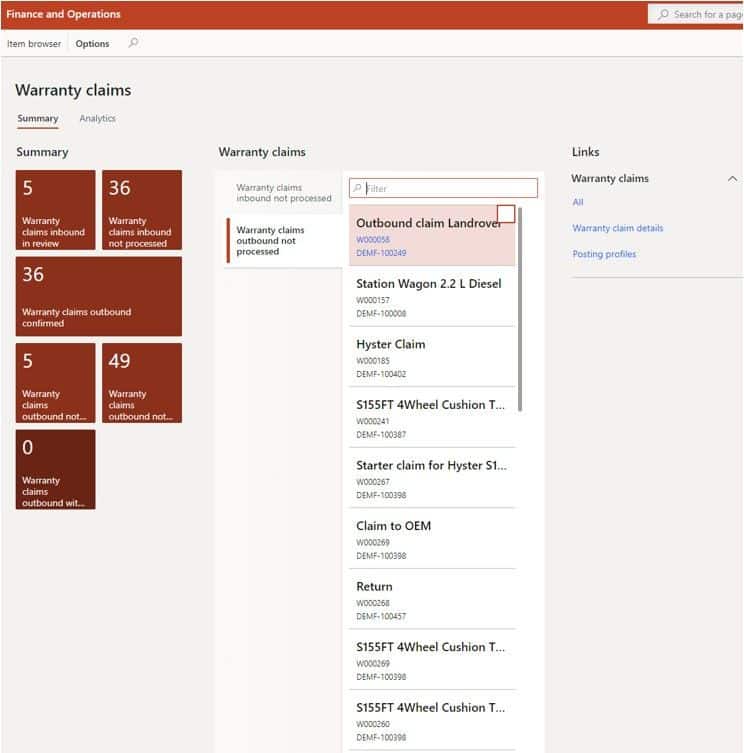
The interactive Business intelligence report empowers end users with a complete 360- degree view of warranty information. The users can now slice, dice, drill down, analyze and interact with all vital warranty KPIs and metrics (such as Completion rates on recalls, Vehicle down time days, Average approval time based on warranty type etc.)
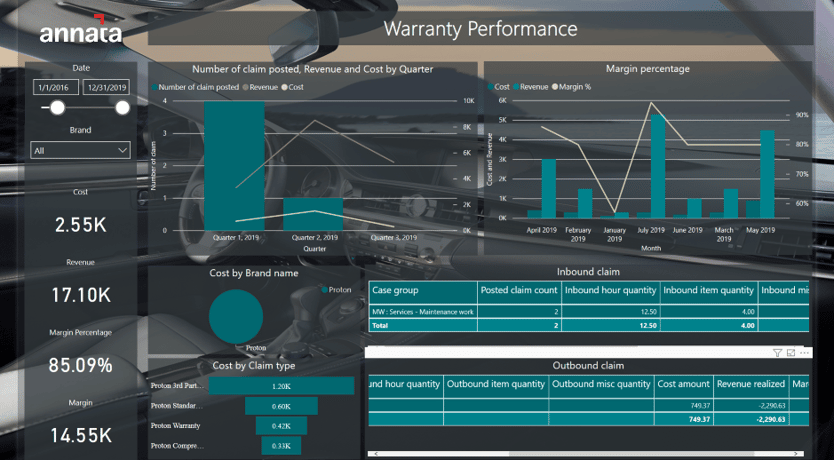
3. Effortless experience & accurate reimbursement of incoming/outgoing warranty claims
For an importer it becomes increasing difficult for the system to handle incoming warranty claims from Dealers and its respective reimbursement requests to OEM (/supplier). Annata 365 is very flexible to handle both the scenario using the concept of Inbound and Outbound warranty claim.
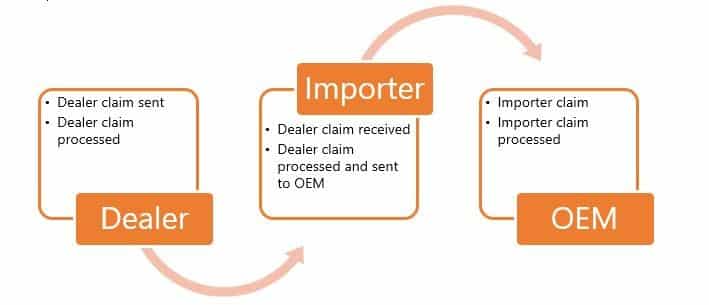
Below are the list of inbound warranty claims received by Importers through multiple integration channels.

The importer can later charge back the reimbursement from the OEM through outbound warranty claim submission. All the warranty transactions from inbound claim will be automatically copied into the outbound claim to avoid manual re-keying effort. Below examples of outbound warranty claims ready to be sent to OEM for settlement.
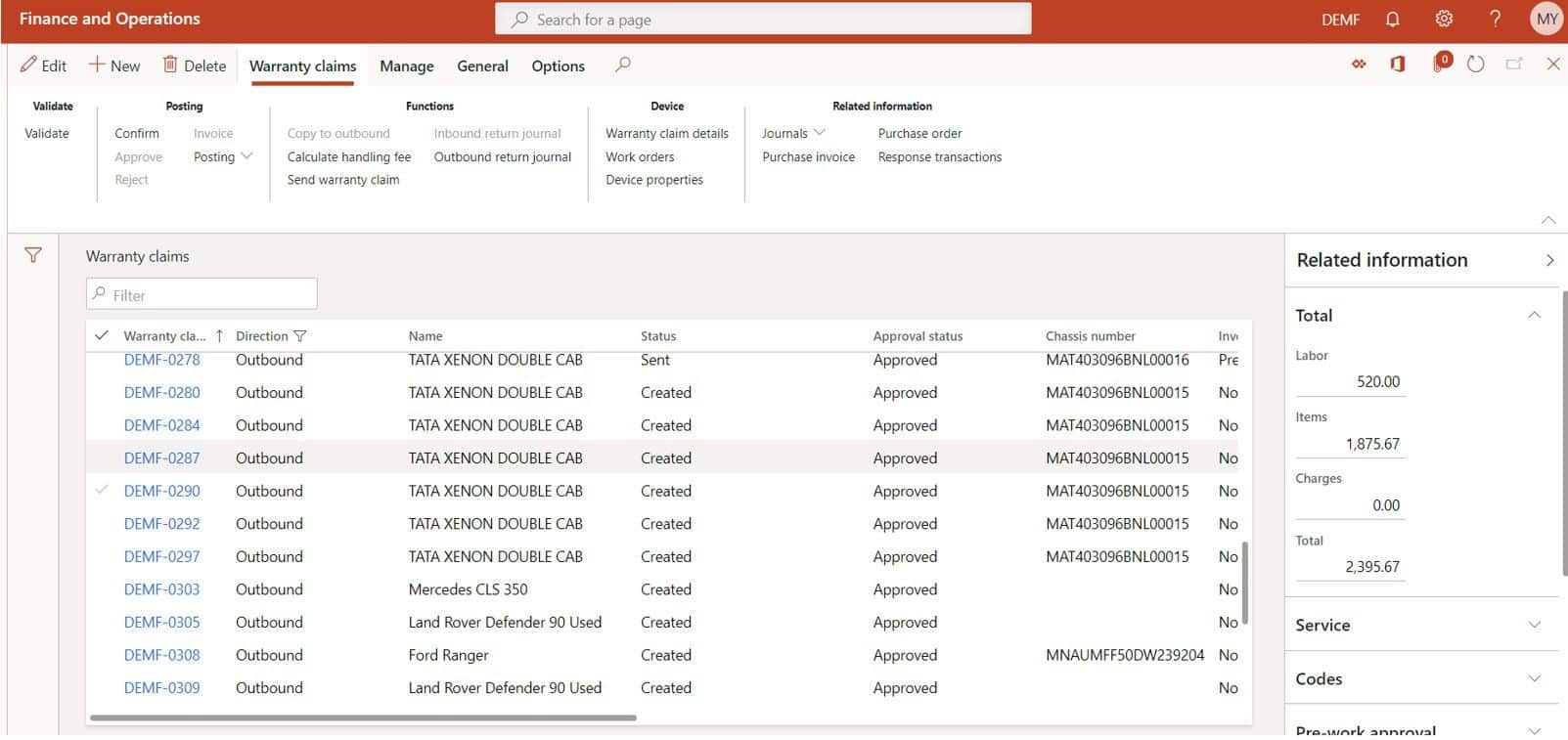
4. Pre-defined repair times and failure parts specific to a repair code
Most of the times the claims are denied and sent back for correction due to mismatches between the repair time claimed and threshold limit of manufacture. This kind of problems can be eliminated using Annata 365 as the standard repair hours can now be pre-defined in the system to make sure they are less likely to be questioned by manufacturer. Secondly the parts involved in the warranty repair jobs are directly linked to the repair codes and are auto populated into the claim lines.
The job lists are the standard templates that are pre-defined with estimated repair hours (within the guidelines of manufacturer) and parts required to accomplish a service job.
Below are few job lists configured for different service jobs and associated with combinations of the repair codes.

These predefined job lists are used in the warranty claims to automatically populate the labor hours and estimated parts needed to successfully diagnose the fault


As the estimated repair hours and the parts requirements are pre-defined prior, the possibility of any deviation from the manufacturer’s guidelines are very low and it also greatly reduces the risk of rejections due to incorrect parts and repair time.
5. Ensures a smooth part return and replacement process
In some cases, the OEM/Supplier may request the dealers to obtain the parts causing failure for analysis. In certain cases, it becomes mandatory for the dealers to return the damaged during the warranty claim process. Annata 365 effectively manages the parts return process by automatically creating a return orders for all the returnable parts in the claim.
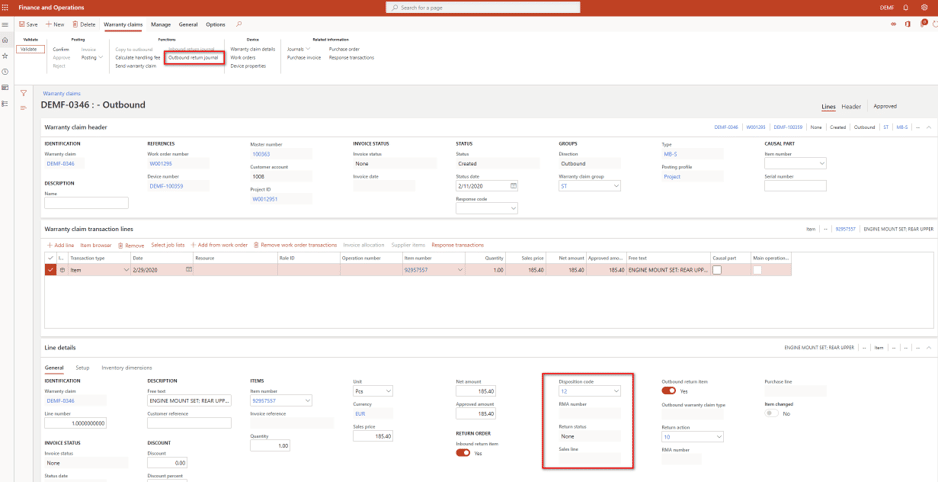
6. Seamless integration with Annata dealer portal and external interfaces:
Annata 365 offers an inbuilt warranty claims integration framework which provides the structure needed to seamlessly exchange warranty information between Annata and OEMs warranty system or a third-party solution.
Annata also offers a web-based Dealer portal that seamlessly integrates with Annata 365. All the independent dealers can now use the portal for all their warranty & Recall inquires.
Dealers login to the Annata dealer portal using specific credentials.

Other then warranty or recalls annata dealer portal also supports vehicle & spare parts ordering process. All order details entered in the dealer portal are seamlessly integrated into Annata 365 solution (ERP system).













